I have an equivalent resistance question. Is it possible to find the equivalent resistance of this circuit? I would like an explanation on how one could go about breaking this circuit down further to be able to find the equivalent resistance.
-
2You must make the initial effort then ask after you study. yes there are many ways already answered here if you know the key words to search... – Tony Stewart EE75 Aug 28 '21 at 22:09
-
1Does this answer your question? [In a grid of resistors, does placement of the voltage source affect the nodal resistances?](https://electronics.stackexchange.com/questions/259534/in-a-grid-of-resistors-does-placement-of-the-voltage-source-affect-the-nodal-re) – Tony Stewart EE75 Aug 28 '21 at 22:11
-
(resistor matrix reduction ) – Tony Stewart EE75 Aug 28 '21 at 22:11
-
2Your ability to learn is only limited by your keyword search skills http://www.rfcafe.com/miscellany/factoids/kirts-cogitations-256.htm – Tony Stewart EE75 Aug 28 '21 at 22:12
-
2R1 and R4 are shorted. Was that intentional or did you make a mistake while copying the circuit? If it is not a mistake then redraw the circuit without R4 and R1 to make it easier. – user57037 Aug 28 '21 at 22:25
-
Thank you everyone for extending a helping hand – mu772 Aug 30 '21 at 22:05
1 Answers
This looks like the kind of 'trick question' seen only in homework...
First thing is to trace out where the voltage nodes are (i.e. nodes that all must have the same voltage, that are all like one big connection dot, including the ideal wires). I see node #1 is the top left corner, and also the same node #1 in the top right corner. Node #2 is the bottom right corner, and also the bottom left corner. There's only one other node, node#0 ("ground") between the negative terminal of V1 and the top of R5. So there are only three unique voltages in this circuit. And I've already designated node#0 as the 0V reference point (because it's the bottom of V1), and V1 fully determines the voltage between node#0 and node#1, so that only leaves one unknown voltage.
R1 has no effect, because it is in parallel with an ideal wire -- the node voltage on the left of R1 is identical to the node voltage on the right of R1, in fact they are the same actual voltage node and R1 is not part of this circuit. Same with R4. These two resistors have no voltage across them, and therefore no current flows through them either. R1 and R4 are just decoration, they don't do anything in this circuit. We never see things like this in real circuts, it's only something seen in DC circuits theory homework problems that we see this kind of blind alleys and tricks to see if the student can read a circuit diagram.
Removing R1 and R4 leaves only the parallel combination of R2 and R3, and that combined resistance is in series with R5. So the current that is drawn by the combination of all of the resistors, is V1 / (R5 + (R2||R3)). That's also the current that flows through R5, so from that you can determine the voltage that is across both R2 and R3. Then since both the voltage and resistance is known for R2, you can apply Ohm's law to find the current that flows through R2, and then apply KCL to find the remaining current that flows through R3.
To really get the most out of this kind of homework exercise, remember this isn't just about arithmetic and applying Ohm's law / KCL / KVL equations, it's also a visual exercise in understanding the topography or shape of how the circuit is drawn. Schematics are not just pictures, they are a two-dimensional language that engineers use to communicate, and learning this language is critical to success as an engineer. Take a look at Rules and guidelines for drawing good schematics for more detail about how we approach this.
You did good in capturing a schematic here, often we see poorly lit / upside-down photos of hand-drawn schematics that are hard to even see, let alone read -- but here you've got labels on all of the components, so when I point out how R2 and R3 are parallel, it's easy to tell what's being referred to. That's a good habit.
The next step is to redraw the same schematic again (keeping the old version of course), but try to redraw it according to the standard rules of higher voltage at the top, lower voltage at the bottom, and minimize the size of the nodes. Trace out where each node connects, to verify that it's really the same circuit. (In computer aided design that's called making a netlist.) Without the stair-step diagonals, it's clearer that R1 and R4 are shorted out. It takes some practice, but it's one of the most important skills to learn.
- 14,413
- 1
- 34
- 53
-
Thank you Mark for your detailed answer, it really clarified things for me a lot. I really appreciate your effort. – mu772 Aug 30 '21 at 22:04
